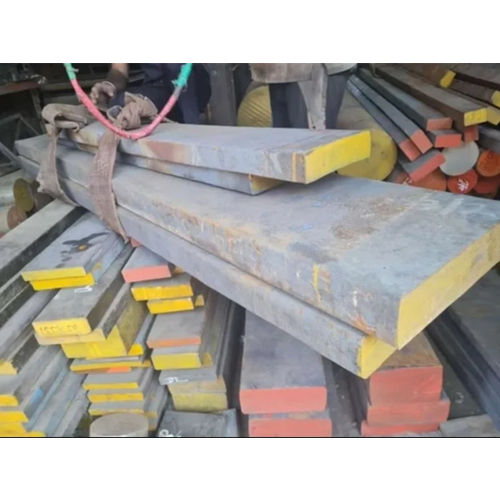
WPS Flat
Product Details:
- Finish New
- Material WPS Flats
- Type Flat bar
- Specific Use For construction
- Grade D3
- Application Plastic Mould Die
- Click to View more
WPS Flat Price And Quantity
- 100 Kilograms
- 180 INR/Kilograms
WPS Flat Product Specifications
- WPS Flats
- D3
- For construction
- New
- Flat bar
- Plastic Mould Die
WPS Flat Trade Information
- Cash Against Delivery (CAD) Cash on Delivery (COD) Cash Advance (CA) Cash in Advance (CID) Cheque
- 5000 Kilograms Per Month
- Days
- Loose
- Asia
- All India
- Mill T.C./ Lab T.C. / Ultrasonic Reports
Product Description
WPS Flats refer to flat steel bars or plates that are manufactured to specific standards and specifications for various applications. The term "WPS" often stands for "Weld Procedure Specification," indicating that these flats are designed with considerations for welding processes. Here™s a detailed description:
WPS Flats Description
1. Material
- Composition WPS flats are typically made from carbon steel, alloy steel, or stainless steel. The specific composition depends on the required mechanical properties and intended application.
- Carbon Steel Commonly used for general-purpose applications and structural components.
- Alloy Steel Used where enhanced strength, toughness, or resistance to specific conditions is required.
- Stainless Steel Chosen for applications requiring high corrosion resistance and durability.
2. Manufacturing Process
- Production WPS flats are produced through processes such as hot rolling, cold rolling, or extrusion. The steel is shaped into flat bars or plates with consistent thickness and width.
- Hot Rolling Steel is heated and rolled into flat bars or plates, which can then be further processed or cut to size.
- Cold Rolling Steel is processed at room temperature to achieve a more precise and smooth finish.
- Heat Treatment Depending on the application, the flats may undergo heat treatment processes to achieve specific mechanical properties, such as increased hardness or strength.
3. Shape and Dimensions
- Shape Flat, rectangular bars or plates with uniform thickness. The flat profile allows for various uses in construction and manufacturing.
- Dimensions
- Thickness Ranges from a few millimeters to several centimeters, depending on the application and load requirements.
- Width Varies from a few centimeters to over a meter.
- Length Typically supplied in standard lengths, such as 6 to 12 meters (20 to 40 feet), but custom lengths can be provided.
4. Properties
- Strength Provides good tensile and yield strength, with variations depending on the steel grade and heat treatment.
- Weldability Designed with welding in mind, making it suitable for fabrication and assembly using various welding techniques.
- Machinability Generally good machinability, allowing for cutting, drilling, and machining as needed for specific applications.
- Durability Offers durability and performance suitable for structural and engineering applications.
5. Applications
- Construction Used for structural elements such as beams, supports, and frames. WPS flats are essential in building and infrastructure projects.
- Manufacturing Employed in the production of machinery parts, tools, and equipment components.
- Fabrication Commonly used in the fabrication of welded structures and assemblies, where precise dimensions and weldability are crucial.
- Automotive and Aerospace Utilized in various automotive and aerospace applications where specific mechanical properties and precision are required.
6. Finishes and Coatings
- Surface Finish Flats can have various finishes, including hot-rolled, cold-rolled, or pickled and oiled, depending on the production process and intended use.
- Coatings May be coated or painted to improve corrosion resistance and durability, especially for outdoor or harsh environments.
7. Standards and Compliance
- Standards Manufactured according to relevant industry standards, such as ASTM (American Society for Testing and Materials), ISO (International Organization for Standardization), or specific local standards. These standards ensure that the flats meet required specifications for chemical composition, mechanical properties, and quality.
- Certification Quality certifications may be available to confirm compliance with performance and safety standards.
8. Advantages
- Versatility Suitable for a wide range of applications due to its adaptability in size, shape, and material properties.
- Cost-Effective Provides a cost-effective solution for structural and manufacturing needs.
- Customizability Available in various sizes and specifications to meet specific design and performance requirements.







 Send Inquiry
Send Inquiry Send SMS
Send SMS